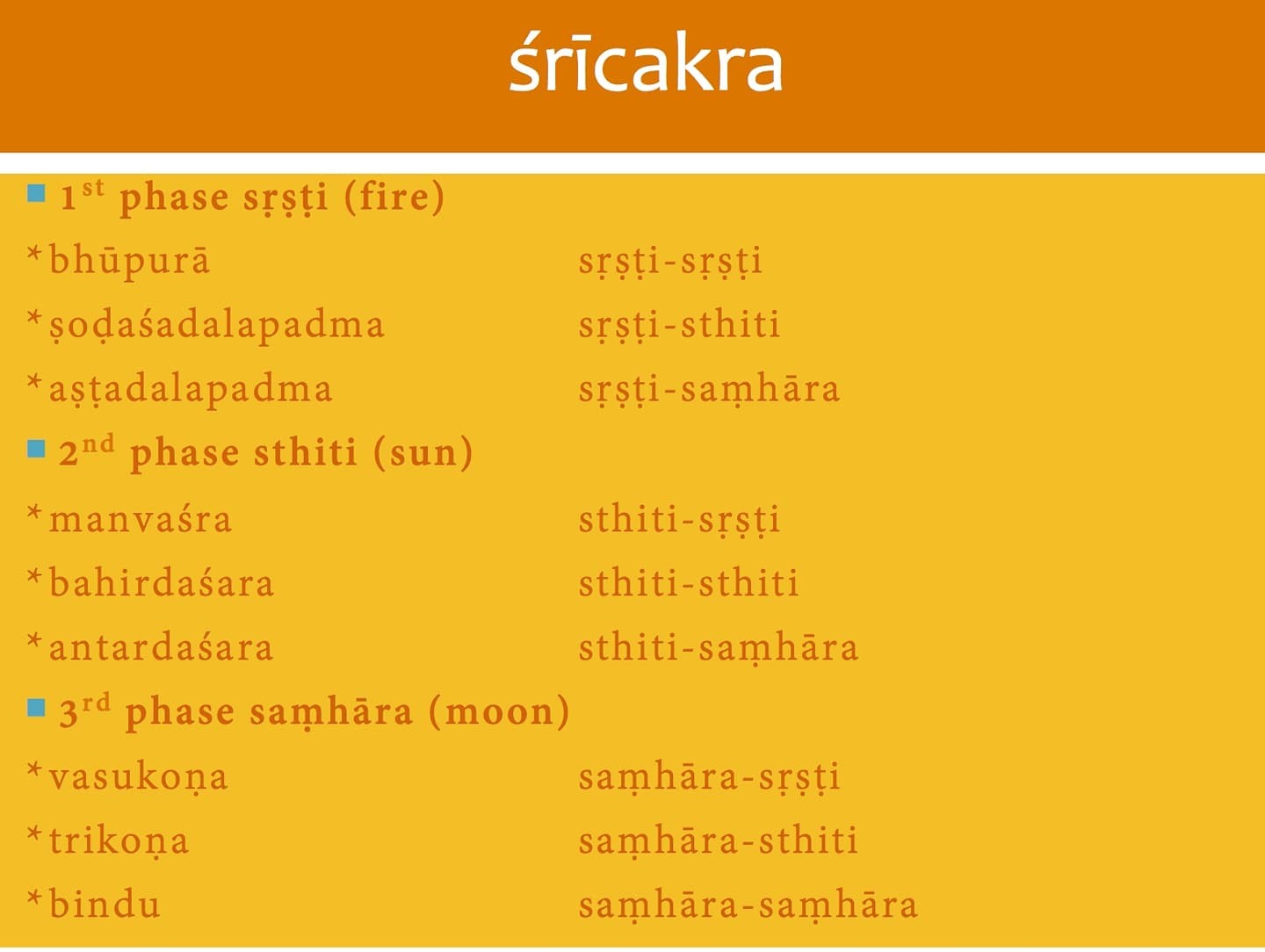
The three primary modes of cosmogony are sṛṭṣi (emanation) sthiti (sustenance), and saṃhāra (dissolution). They are often spoken of as creation, preservation, and destruction and are popularly known in mainstream purāṇic Hinduism as controlled by Brahmā, Viṣṇu, and Maheśvara. In Śrīvidyā, and by extension kaula tantra, these are functions of Tripurasundarī [who is also envisioned, depicted, and worshiped as kuleśvarī-kuleśvara in related kaula lineages] and are present within the structural configuration of the śrīcakra.
Unlike in other religious traditions, such as the Abrahamic ones where creation happens just once [despite there being two stories of it in Genesis, ontologically it only happens once], the three principal cosmic processes here function simultaneously as an uninterrupted flow of śakti that empowers the continuous and successive unfolding of reality. Accordingly, there is no beginning, nor will there ever be an end. Rather, there is a dynamic interplay of opposites that temporarily resolve into rest, constituting a triadic structure, empowered by a transcendent fourth which is quite literally, without a name.
The specific details are too lengthy, and such rahasya of the śrīcakra is best to be elucidated by the guru, rather than read in a public forum, but a basic understanding reveals how the three modes further expand in three ways resulting in a nine leveled map revealing how the three continuously function within each other. This knowledge teaches us how sṛṣṭi, sthiti, and saṃhāra are not stand alone processes, but are actually constituted by the interplay between all three within each of the three. These nine levels are related to specific goddesses within the śrīcakra and when included with other more specific aspects of their powers form an intimate relationship with other goddesses closely associated with Tripurasundarī and the transmission of kaula teachings.
Related kaula lineages describe how these three (plus one) modes of cosmogony unfold through the classic triadic epistemology of prameya (perception), pramāṇa (method of perceiving), and pramatṛ (the perceiver) and reveal the inner mechanics of how consciousness begins to recognize the experiencer within sensory experience by dissolving the objects of knowledge into the means of knowing them and finally into the knower itself. Such sādhanā involves the sequential "krama" experiential unfolding of these twelve aspects to be meditated upon on twelve sense organs and is an advanced kaula sādhanā favored by some of our greatest kaula tantric masters. śrī gurubhyo namaḥ

